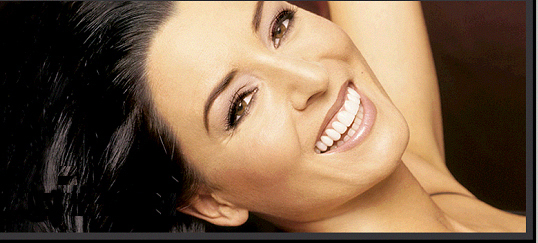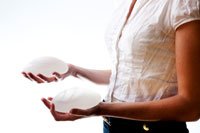 When considering breast augmentation surgery, a woman has several important decisions to make, including choosing a cosmetic surgeon, the size of the implant, and the type of implant. A recent poll at www.implantinfo.com of almost 500 women who are planning to have breast augmentation surgery revealed that more plan to have silicone implants (58 percent) compared to saline implants (24 percent). Seventeen percent said they were not sure which type of implant they would use.
When considering breast augmentation surgery, a woman has several important decisions to make, including choosing a cosmetic surgeon, the size of the implant, and the type of implant. A recent poll at www.implantinfo.com of almost 500 women who are planning to have breast augmentation surgery revealed that more plan to have silicone implants (58 percent) compared to saline implants (24 percent). Seventeen percent said they were not sure which type of implant they would use.
While the informal poll reveals a preference for silicone, data from the American Society of Plastic Surgeons shows that women who had breast augmentation surgery last year were split evenly between silicone and saline. In 2008, saline was used more often (for 53 percent of breast augmentation surgeries) compared with silicone implants (47 percent).
All breast implants are made out of a silicone outer shell; the difference between implants is what they are filled with.
Saline Breast Implants
- Filled with saline, usually at the time of surgery, which allows for a smaller incision.
- The size of saline implants can be changed over time because the implants have small valves in which a needle can be inserted to either add or remove the liquid.
- It is easier to detect ruptures in saline implants compared to silicone, because they deflate making it noticable almost immediately.
- Less expensive than silicone implants.
- Available to women 18 and older for breast augmentation.
Silicone Breast Implants
- Pre-filled with silicone gel.
- Many women feel that silicone implants look and feel more natural.
- If a different size implant is desired at a later point, a surgery must be performed to change the implant.
- Available to women 22 and older for breast augmentation.
Both types of breast implants are approved by the FDA, so they have been thoroughly researched and tested and reviewed by an independent panel of physicians for safety.
 ABC News reports that reality TV star Heidi Montag is considering a breast reduction after getting 10 plastic surgery procedures in one day earlier this year—including a breast augmentation that gave her a G cup.
ABC News reports that reality TV star Heidi Montag is considering a breast reduction after getting 10 plastic surgery procedures in one day earlier this year—including a breast augmentation that gave her a G cup.
Buyer’s Remorse
Do plastic surgery patients sometimes have “buyer’s remorse”?
Dr. Timothy Miller, chief of plastic surgery at the David Geffen School of Medicine at UCLA, says it’s very rare. “Maybe I’ve seen it a few times in my practice,” he adds.
On the other hand, Chicago plastic surgeon Dr. Julius Few feels it may be on the rise. “I think [plastic surgery remorse] is actually increasing, and I think in part it’s increasing because of the drop in reimbursement by insurance companies, which is driving doctors in other specialties into the plastic surgery market,” he says.
Patients who have “buyer’s remorse” after plastic surgery are likely troubled by deeper issues, says Ann Kearney-Cooke, a psychologist who specializes in weight and body image issues. “[The surgery] changes the look, but if you have a problem that you haven’t resolved, you’ll have a temporary positive feeling, but then something else is the problem,” she says.
Communication is Key
The plastic surgeons do agree that regret can potentially be avoided if patients and doctors recognize and address the problem.
Dr. Few employs a therapist in his practice for those patients who need it. “We know in plastic surgery that if somebody has undue stress, the risk of complication is higher,” he says.
“Most plastic surgeons will tell patients to work out their problems—go talk to a psychiatrist or confide in somebody else,” says Dr. Miller.
Communication between the patient and doctor is critical. “It’s really important that both the patient and the physician understand what the motivation is behind the surgery,” said Dr. Malcolm Roth, a plastic surgeon in Brooklyn, N.Y.
 According to an article published in the journal Body Image, survey participants who reported favorable impressions of reality television shows featuring cosmetic surgery were more likely to indicate interest in pursuing surgery.
According to an article published in the journal Body Image, survey participants who reported favorable impressions of reality television shows featuring cosmetic surgery were more likely to indicate interest in pursuing surgery.
Charlotte Markey, of Rutgers–Camden, and Patrick Markey, of Villanova University, did two studies to “examine the influence of media messages about cosmetic surgery on youths’ interest in altering their own physical appearance,” according to the article’s abstract.
The first study was a survey of 170 teens (average age 19.77, 59% female) about their impression of reality shows that feature cosmetic surgery makeovers and their own interest in cosmetic surgery.
Those who had favorable impressions of cosmetic surgery reality television shows were more likely to have an interest in pursuing surgery, the researchers found.
The second study of 189 participants (average age 19.84, 51% female) had half watch a TV program with a cosmetic surgery makeover and the other half watch a program with a neutral message.
The researchers found that those who viewed the cosmetic surgery show were more inclined to consider the procedure for themselves than those who watched the neutral message program, and that women were more likely to want cosmetic surgery than men.
Many people equate changing their appearance with being happier, noted Dr. Charlotte Markey, even though there is no evidence to prove this theory, she says.
“There is a cultural context to never be satisfied with our physical selves. It’s the rare person who is either completely oblivious or has developed such a strong counter message to not be affected,” said Markey.
The article, titled “A correlational and experimental examination of reality television viewing and interest in cosmetic surgery,” is available for purchase at Science Direct.
Sagging of the eyebrow and forehead—including the development of horizontal and vertical forehead creases—is one of the early signs of aging and contributor to the “tired” look. This condition can be greatly improved with endoscopic browlift (or upper face lift).
Endoscopic or minimal-scar browlift is performed using a tiny fiberoptic lens inserted through half-inch incisions placed in the hairline. The lens is attached to a camera, which is connected to a television, allowing for visualization of the surgery. Dr. Haiavy performs the procedure while viewing the television monitor and manipulating the tiny instruments externally.
An endoscopic browlift is particularly useful with younger patients where the removal of excess skin is not required. With an endoscopic browlift, loss of sensation or hair at the incision site is minimized. Since an endoscopic browlift can significantly reduce the frown lines between the eyes, it is often performed in conjunction with upper eyelid surgery to achieve optimal results.
A browlift can be performed as an outpatient procedure under local anesthesia with deep sedation, or general anesthesia, and may take 1 to 2 hours. With this method the incision is hidden just inside the hairline on the scalp and above the ears. The surgeon may lessen the appearance of wrinkles by weakening selected muscles and releasing tissues, which cause the wrinkles. Usually the tail of the eyebrows are also elevated and the forehead skin is gently re-draped, giving the entire face a rejuvenated look. With an extended browlift a stitch is also placed to moderately elevate the mid-face (cheeks).
What are the advantages of Endoscopic Browlift Surgery?
- Smaller incisions
- Minimal scarring
- Less hair loss
- Less chance of numbness
- Minimal bleeding
- Quicker recovery
As a cosmetic surgeon and Diplomate of the American Board of Cosmetic Surgery, Dr. Haiavy performs all procedures in a safe, state-of-the-art AAAHC accredited on-site outpatient surgery center. Dr. Haiavy and his knowledgeable staff are dedicated to providing their patients with the highest standard of care coupled with personal attention and privacy in a comfortable and safe environment.. For more information on Endoscopic Browlift, feel free to contact Inland Cosmetic Surgery at 909-987-0899 for a professional and personal consultation. To view before after pictures of patients that have had the endoscopic browlift procedure by Dr. Haiavy, you can visit their website at Before & After Brow Lift Photos
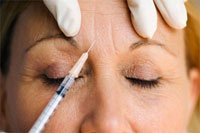 The Dysport Challenge has proven to be such a huge success—it recently surpassed 100,000 registrants—that it has been extended through the end of September 2010.
The Dysport Challenge has proven to be such a huge success—it recently surpassed 100,000 registrants—that it has been extended through the end of September 2010.
Patients can take advantage of up to $150 in savings on Dysport. Those who register can save $75 when they try Dysport, which is used to treat frown lines. If they “love it” they receive a rebate for $75 off their next Dysport treatment. If they “leave it” they’ll get a $75 rebate off another botulinum toxin type A product, such as Botox.
When the challenge began in March, the New York Times noted that it is “thought to be the first time a drug maker has offered a rebate on a competing drug [Botox].” Jonah Shacknai, the chief executive of Medicis, who markets Dysport, said, “We are so confident that we are literally willing to bet our money that patients will love their Dysport treatment.”
The bet seems to have paid off: between March 1 and May 9, 2010, over 91 percent of 22,416 patients who made a selection chose “Love It,” according to Medicis; so far, only 2.6 percent of registered patients have made a selection to “Leave It.”
Dysport, which was approved by the FDA in April 2009 to treat severe frown lines between the eyebrows, works much like Botox, using botulinum toxin type A to temporarily relax wrinkles. Dysport smooths out facial lines and wrinkles by blocking nerve impulses that travel to specific muscles in the face.
“We are encouraged by the overwhelming response to the Dysport Challenge with over 100,000 patients participating, and the strong acceptance of the brand by physicians,” wrote Shacknai, in a recent earnings report.
The Dysport Challenge is open to patients 18 and older and complete details are at www.DysportUSA.com. Inland Cosmetic Surgery in Rancho Cucamonga, California offers both Dysport and Botox procedures.
Lately we have been getting more and more patients asking for a tummy tuck not knowing exactly what it entails. The general desire is to achieve a “flat stomach”. The truth of the matter is not everyone is a good candidate for a tummy tuck and most importantly not everybody needs a tummy tuck to achieve a flat stomach. In this article I will try and review the different options available to improve the abdominal area. 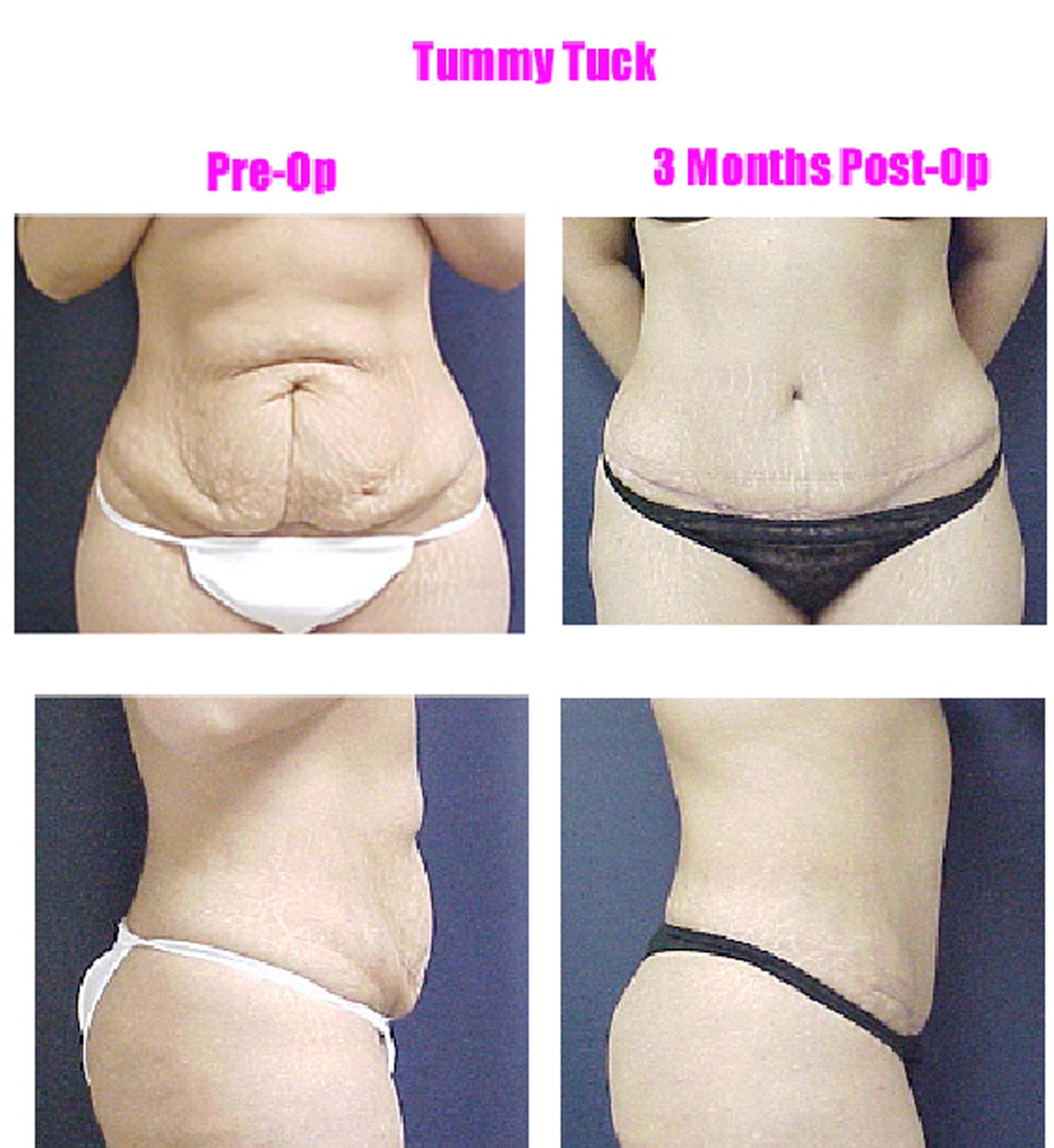
A tummy tuck or abdominoplasty is a procedure for patients that have loose skin, stretch marks and loose abdominal muscles. This may be due previous pregnancies, weight loss and aging. A full abdominoplasty involves a long incision, removal of excess skin and fat, tightening of abdominal muscles and re-implantation of belly button in new skin. This is fairly extensive procedure and requires a 3-6 week recovery. The closer the patient to their ideal body weight the easier it is to accomplish the desired look and the easier the recovery.
The modified tummy tuck or the mini-tuck is not quite as extensive as the full tummy tuck. It involves a shorter incision, less skin removal, some liposuction, muscle tightening in the lower abdomen only (below the belly button), with or without transposition of the belly button. This is more suitable for patients who have laxity of skin and muscle mostly in the lower abdomen and a fairly tight upper abdomen.
For patients that tend to store most of their fat in the abdomen and excess bulk with some skin laxity is the main problem, liposuction with a dermolipectomy (excess skin removal) is the treatment of choice. This frequently occurs in women after multiple births with weight gain and sagging skin. The liposuction is performed with the standard tumescent technique of liposuction in the entire abdomen and waist region and then some of the loose skin between the belly button to pubic area is removed. This usually results in a smaller scar and a faster recovery. 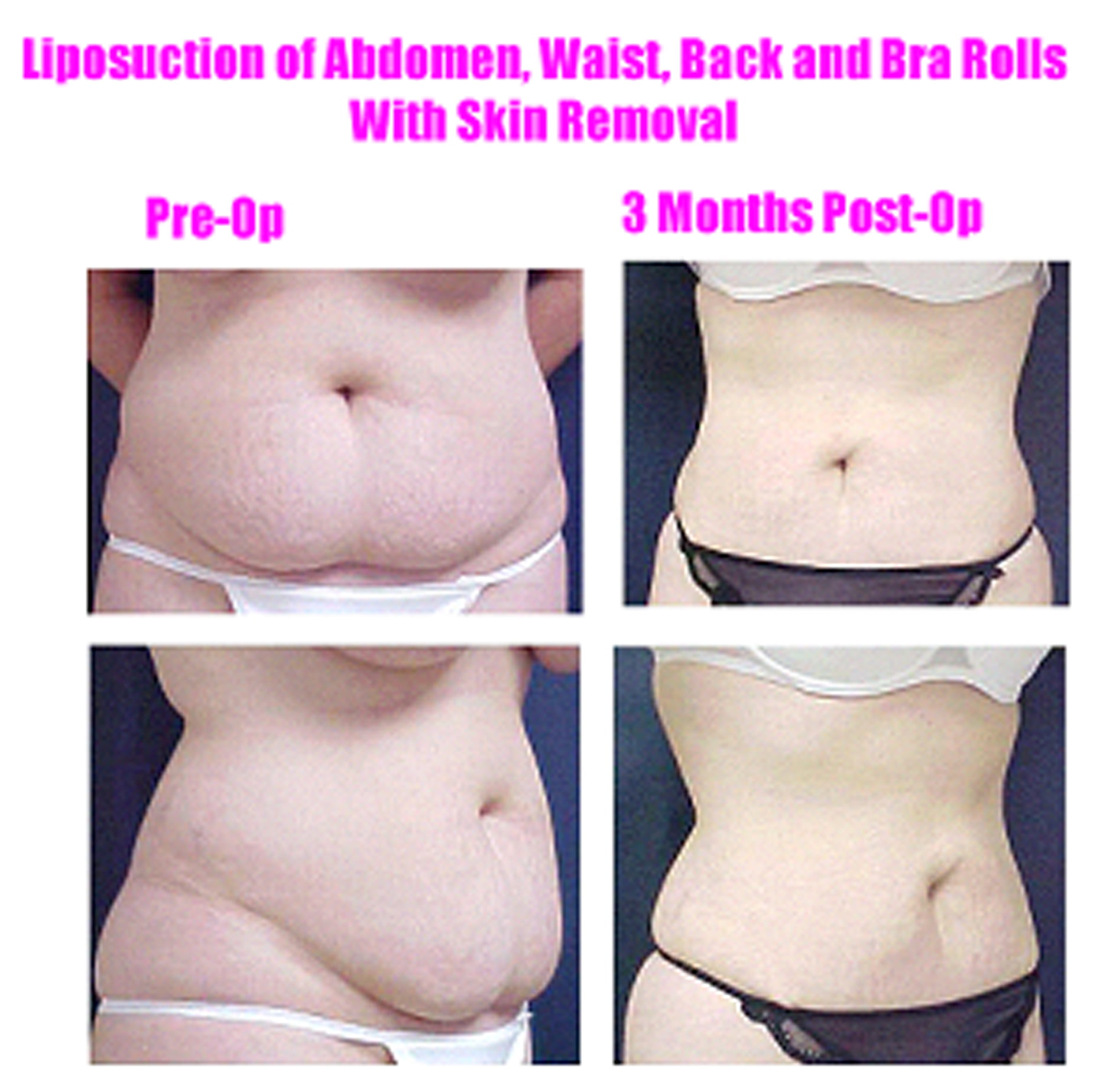
It is generally not recommended to combine a full tummy tuck and extensive liposuction. This may result in a higher rate of complications and even longer recovery. Therefore, patients that require both procedures extensively, may choose to have liposuction first then followed by a tummy tuck 6-12 months later. In a small number of cases it is possible to perform the tummy tuck, followed by a touch up liposuction session.
Patients that have retained fairly good skin elasticity and have minimal skin laxity with some excess fat may achieve their goal of a flatter stomach with liposuction only. Liposuction removes the excess fat cells but not the overlying skin, but it does stimulate skin contraction over time. Even in older patients it is quite surprising how well the skin will contract.
Liposuction surgery is mainly considered a contouring procedure and is not a method of weight reduction. It can be useful, as an adjunct to diet and physical conditioning in the management of contour problems. The success of liposuction depends on patient’s post op weight management and care as well as his/her skin elasticity.
To find out which option is suitable for you, please schedule a personal consultation with myself 1-800-6-COSMETIC, 909-987-0899. oYou can view our photogallery of Tummy Tucks at Tummy Tuck Before & After Photos.
Sincerely–
Dr. Haiavy
You may have heard of the “dine and dash” or “gas and go” but “Botox and bail”? According to msnbc.com it’s becoming more common for patients to get Botox, dermal fillers, and other beauty procedures and then leave without paying.
One recent case involved a woman, dubbed the “Beauty Bandit,” who received over $3,000 worth of Botox and fillers at a cosmetic dermatology center in Fort Lauderdale and then disappeared after telling staff she had run out to get cash from an ATM. The suspect was arrested recently, but she is just one of many recent “cosmetic criminals” who have made headlines.
“From talking to our doctors, this is a problem that’s occurring from coast to coast,” says Jeff Karzen, spokesman for the American Academy of Cosmetic Surgery. Botox bandits have also been reported in Newport Beach, Calif.; Port St. Lucie, Fla.; Tampa, Fla.; Brisbane, Australia and Kenton, England.
Some surgeons point to the bad economy and the perceived “necessity” of cosmetic procedures as the catalyst behind these crimes, according to msnbc.com.
Dr. Jon Grazer, a Newport Beach plastic surgeon who was hit by a Botox bandit last year, says that many feel Botox is no longer a luxury. “It’s something people have to have, and if they can’t afford it because of the economy, I think it’s going to push them to get it by whatever means they can.”
It’s happened three times at Dr. Samir Pancholi’s cosmetic surgery practice in Las Vegas. “The first time, it was a woman in her 50s who came in and got treatment, then said, ‘My purse is in the car, I’ll go grab it and be right back.’ Then she was gone.”
What are doctors doing in response to these “Botox and bail” scams? Some affected by criminals have changed their payment rules, such as requiring all new patients to pay upfront.
 A new survey by the American Academy of Cosmetic Surgery indicates growing acceptance of cosmetic surgery among minorities. The survey of over 1,300 people revealed that more than half of minorities think the popularity of cosmetic surgery has grown among members of their racial/ethnic group in the last five years.
A new survey by the American Academy of Cosmetic Surgery indicates growing acceptance of cosmetic surgery among minorities. The survey of over 1,300 people revealed that more than half of minorities think the popularity of cosmetic surgery has grown among members of their racial/ethnic group in the last five years.
An estimated 6.9 percent of all minority respondents and 9.9 percent of whites respondents indicated they had had an invasive or non-invasive cosmetic surgery procedure.
By race/ethnicity, Asians were most likely to report having had cosmetic surgery (11.1%), followed by African-Americans (7.1%), Hispanics (4.6%), and other races (6.2%). About a quarter of those surveyed knew someone of their racial/ethnic background who has had cosmetic surgery.
Most Common Procedures
For invasive cosmetic surgery procedures, the most common procedures Asian respondents reported having were facelift, eyelid surgery, and ear surgery. Among Black respondents, the top procedures were liposuction, breast reduction, and forehead lift. Among Hispanic respondents the top procedures were tummy tuck, thigh lift, and breast augmentation.
The Surgeon’s Ethnicity
Over 30 percent of respondents would seek out a cosmetic surgeon that shares their race/ethnicity. However, over half of respondents felt that if they had cosmetic surgery it would be hard to find a cosmetic surgeon of the same race/ethnicity. African-Americans were almost twice as likely to report having difficulty finding a cosmetic surgeon of the same race when compared to Asians, 59.8% compared to 32.6%, respectively.
Cosmetic Surgery Not Limited to Specific Culture
“Cosmetic surgery is en vogue no matter who you are,” said Mark Berman, MD, President of the American Academy of Cosmetic Surgery. “Feeling better about yourself and making improvements to your looks is thankfully not limited to a specific race or culture.”
Dr. Haiavy is a member of the American Academy of Cosmetic Surgery practicing cosmetic surgery in Rancho Cucamonga, California.
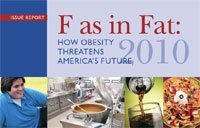 “F as in Fat: How Obesity Threatens America’s Future 2010,” a new report on obesity in the U.S., revealed that obesity rates increased in 28 states in the past year.
“F as in Fat: How Obesity Threatens America’s Future 2010,” a new report on obesity in the U.S., revealed that obesity rates increased in 28 states in the past year.
California ranks as the 41st most obese state, and while far down in the rankings, it still has an adult obesity rate of 24.4 percent. For historical perspective, no state had an obesity rate above 20 percent in 1991. The number 1 ranking went to Mississippi, where 33.8 percent of adults are obese, and Colorado has the lowest obesity rate of any state, at 19.1 percent.
“This report shows that the country has taken bold steps to address the obesity crisis in recent years, but the nation’s response has yet to fully match the magnitude of the problem. Millions of Americans still face barriers – like the high cost of healthy foods and lack of access to safe places to be physically active – that make healthy choices challenging,” said Jeffrey Levi, PhD, executive director of Trust for America’s Health, which released the report together with the Robert Wood Johnson Foundation.
More people are turning to bariatric surgery to lose a significant amount of weight and reduce the health risks related to obesity.
Laparoscopic bariatric surgery involves an inflatable silicone tube called a lap band being placed on the upper portion of the stomach, which effectively limits the patient’s food intake and suppresses hunger. As a result, patients feel satisfied with smaller amounts of food, which leads to weight loss. The surgery should not interfere with normal digestion.
A good candidate for the lap band surgery meets the following requirements:
- BMI of 40 or higher
- No hyperphagia/polyphagia
- Good mental health
- Between ages 18 – 55
- History of failure with traditional weight loss methods
Contact our office for a private consultation with our Bariatric Surgeon who performs laparoscopic bariatric surgery in our state-of-the-art facility in Rancho Cucamonga, California.
Dr. Haiavy performs post-bariatric cosmetic surgery to remove or tighten excess, loose skin. Common post-bariatric body contouring procedures include tummy tuck, breast lift, body lift, arm Lift, and liposuction.
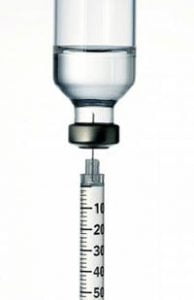 Collagen injectables will be gone from the U.S. cosmetic market by the end of the year due to changes in consumer trends, reports the latest issue of Dermatology Times.
Collagen injectables will be gone from the U.S. cosmetic market by the end of the year due to changes in consumer trends, reports the latest issue of Dermatology Times.
First Johnson & Johnson announced in late 2009 that it was discontinuing its collagen filler Evolence. Then, in January 2010, Allergan announced it would be discontinuing its collagen line of fillers—CosmoPlast, CosmoDerm and bovine products Zyderm and Zyplast—at the end of the year.
Allergan halted production of the products in 2009, but manufactured sufficient inventory to meet estimated market demand through the end of 2010, according to Kelly Lao, manager of corporate communications.
Lao says the discontinuation of their collagen products “is in response to declined market interest … since the introduction of hyaluronic acid dermal fillers like Juvéderm have become more popular.”
Dr. Seth Matarasso, a clinical professor of dermatology at the University of California School of Medicine, San Francisco, agrees with Lao’s assessment of the fillers market. “There is an overwhelming popularity of the new kid on the block: the hyaluronic acids. They have been embraced universally, and suddenly collagens aren’t as popular,” he says.
The popularity of the new hyaluronic acid wrinkle fillers, which include Restylane, Perlane, Juvéderm, Radiesse and Sculptra, is due to several factors:
- Longer-lasting results
- Appear to give a better fill
- Some contain lidocaine for less painful injections
Upcoming improvements of hyaluronic acids will provide more volume and contour-changing ability and the ability to fill deeper lines, according to Dermatology Times.
Inland Cosmetic Surgery offers a variety of the current dermal filler products, including Juvederm, Restylane, Perlane, and Radiesse. During your consultation, the center will help to select the best product and treatment for your wrinkle concerns.
The full story is available online: “Dermatologists prepare for departure of collagen from U.S. market.”
